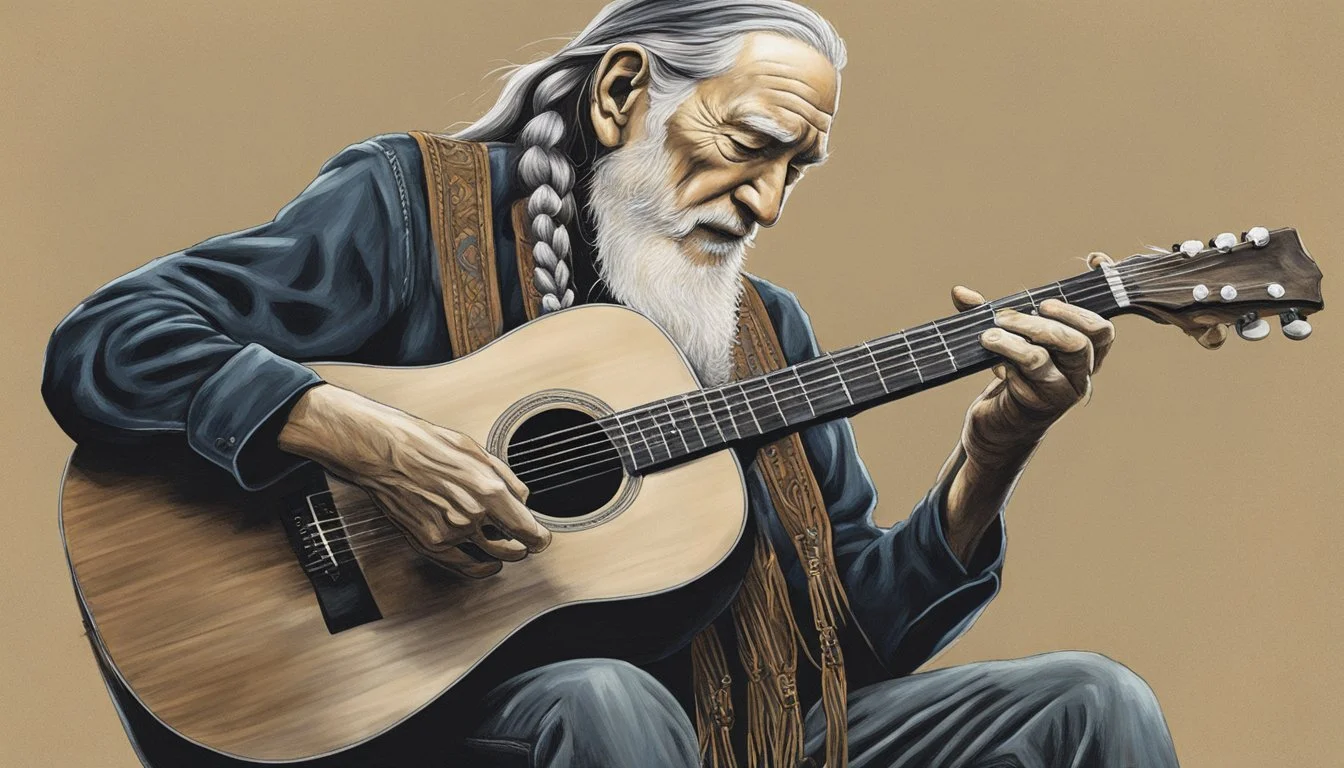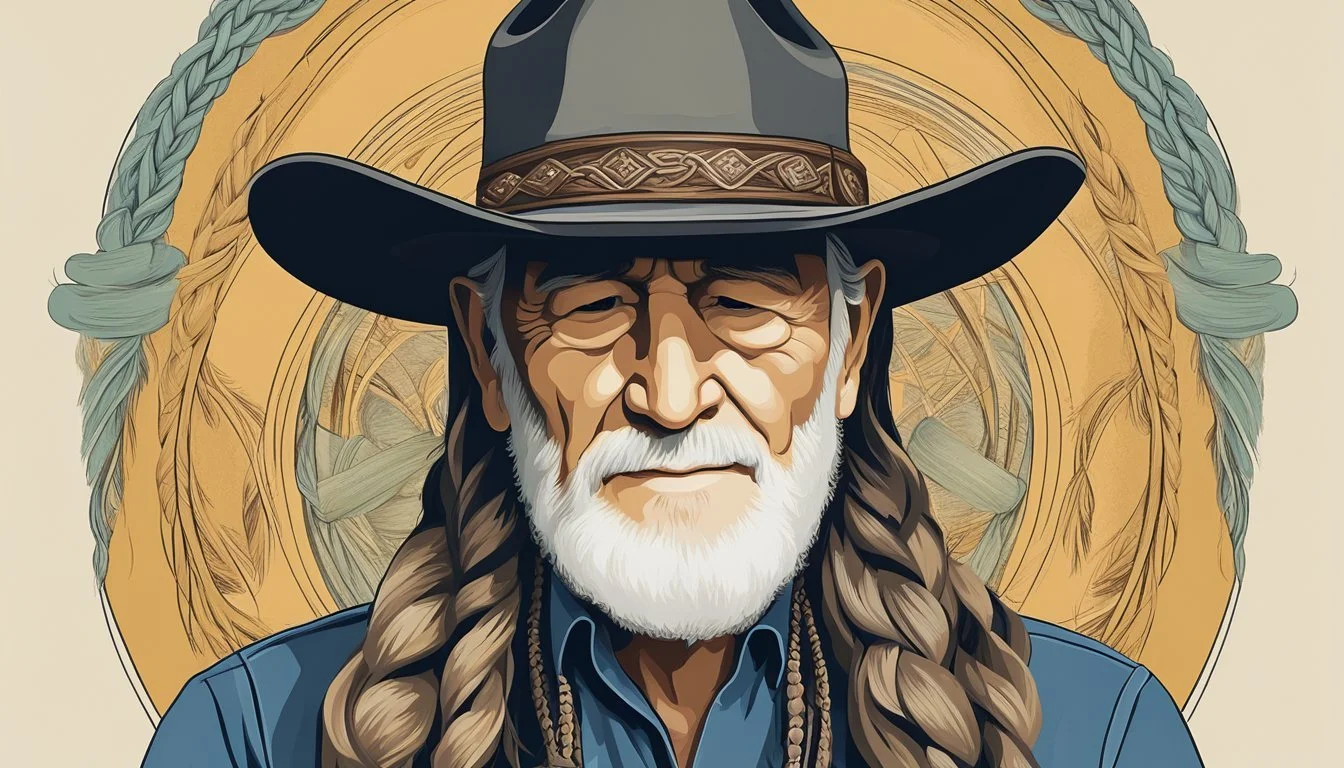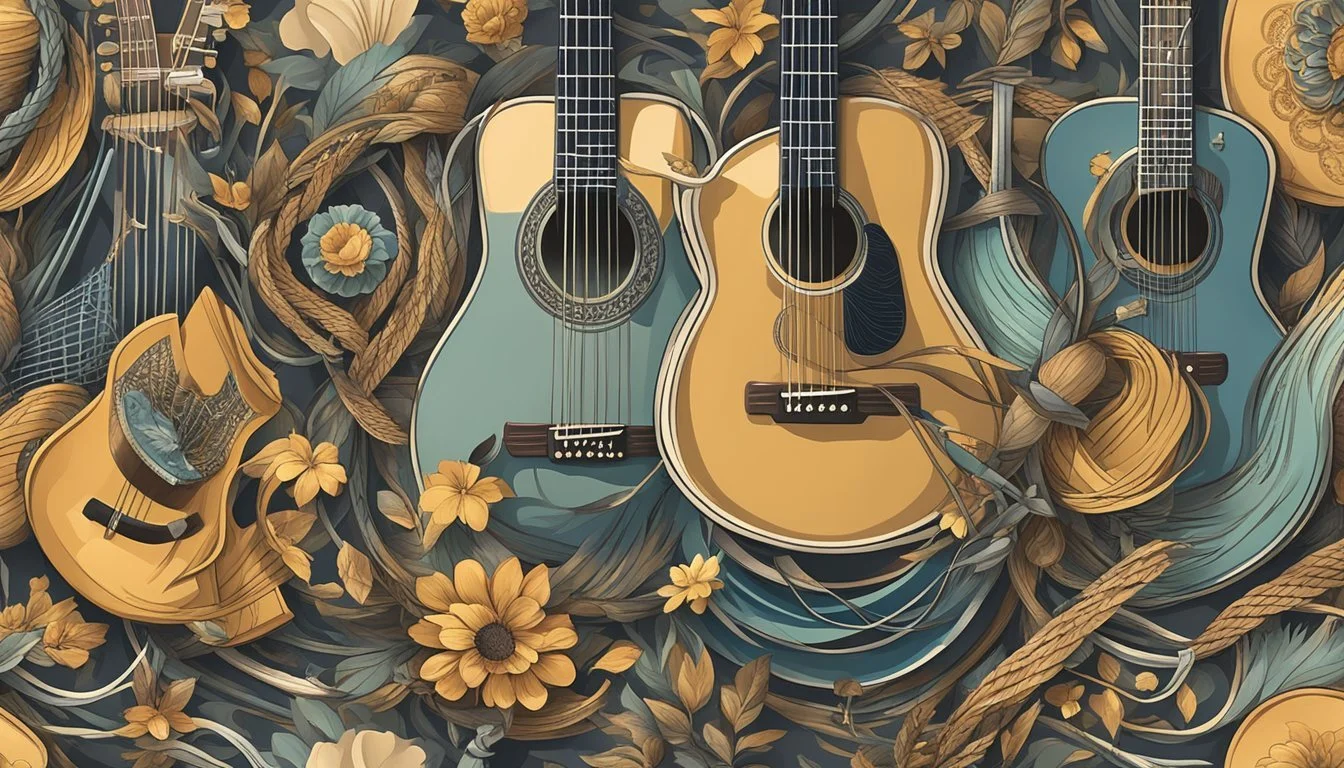Willie Nelson Braids: The Iconic Hairstyle That Defines a Country Legend's Rebellious Spirit!
Willie Nelson's iconic braids have become an inseparable part of his image as a country music legend. The distinctive hairstyle, which he adopted in the 1970s, has remained a constant feature throughout his career. Willie Nelson's braids are typically styled as two long plaits that hang down on either side of his face, often secured with bandanas or headbands.
These braids have come to symbolize Nelson's rebellious spirit and nonconformist attitude within the country music scene. They've inspired fans and fashion enthusiasts alike, with some even creating costumes and accessories based on his signature look. Nelson's braids are not just a personal style choice but have become a cultural touchstone, representing his unique place in American music history.
The maintenance of Willie Nelson's braids requires regular care and attention. While the exact styling process may vary, it generally involves sectioning the hair, braiding it tightly, and securing the ends. This distinctive hairstyle has become so ingrained in Nelson's public persona that it's hard to imagine him without his trademark plaits.
The Iconic Image of Willie Nelson
Willie Nelson's distinctive appearance has become as legendary as his music. His unique look combines several signature elements that have defined his image for decades.
The Signature Braids
Willie Nelson's long braids are perhaps his most recognizable physical feature. He began wearing this hairstyle in the early 1970s after moving to Austin, Texas. The braids marked a dramatic shift from his earlier clean-cut look as a Nashville songwriter. Nelson has maintained his braided hairstyle for over 50 years, making it an inseparable part of his public persona.
The country star's braids have become so iconic that fans can hardly imagine him without them. Nelson humorously attributes his decision to keep the braids to their ability to provoke reactions. This rebellious attitude aligns perfectly with his outlaw country image.
Bandana and Guitar: Symbols of Outlaw Country
Complementing his braids, Willie Nelson often sports a red bandana tied around his forehead. This accessory, along with his trusty guitar named Trigger, completes his iconic look. The bandana serves both practical and symbolic purposes, keeping sweat out of his eyes during performances while reinforcing his outlaw image.
Trigger, Nelson's battered Martin N-20 classical guitar, has been his constant companion for decades. The instrument's worn appearance, complete with a large hole in its body, tells the story of countless performances and recording sessions. Together, the bandana, guitar, and braids create an unmistakable visual representation of Willie Nelson's enduring presence in country music.
Career and Achievements
Willie Nelson's career spans over six decades, marked by numerous accolades and collaborations with music icons. His distinctive voice and songwriting prowess have earned him widespread recognition in country music and beyond.
Grammy Awards and Recognitions
Willie Nelson has amassed an impressive collection of 15 Grammy Awards throughout his career. He received his first Grammy in 1975 for Best Country Vocal Performance, Male, for "Blue Eyes Crying in the Rain." Nelson's Grammy wins span various categories, including Best Country Album and Best Traditional Pop Vocal Album.
In 1993, Nelson was inducted into the Country Music Hall of Fame. He also received the prestigious Kennedy Center Honors in 1998, recognizing his lifetime contributions to American culture. Nelson's impact on music extends beyond country, as evidenced by his induction into the Songwriters Hall of Fame in 2001.
Collaborations with Legends
Nelson's collaborative spirit has led to memorable duets and projects with fellow music icons. He partnered with Waylon Jennings, Johnny Cash, and Kris Kristofferson to form the supergroup The Highwaymen in 1985. Their albums achieved both critical acclaim and commercial success.
Nelson has also worked with rock legends like Neil Young and Keith Richards. His duet album with Merle Haggard, "Pancho & Lefty," became a country classic. Collaborations with younger artists such as Beck and The Flaming Lips have demonstrated Nelson's versatility and enduring relevance across generations of musicians.
Musical Influence and Genre
Willie Nelson's iconic braids became a symbol of his rebellious spirit and innovative musical style. His distinctive look mirrored his groundbreaking approach to country music, blending traditional elements with a more progressive sound.
The Essence of Outlaw Country
Willie Nelson played a pivotal role in shaping the Outlaw Country movement. This subgenre emerged in the 1970s as a reaction against the polished Nashville sound. Nelson's unconventional appearance, including his braids, reflected the movement's rejection of mainstream country music norms.
Outlaw Country emphasized authenticity and creative freedom. Nelson's music featured raw, honest lyrics and a stripped-down sound. His album "Red Headed Stranger" (1975) became a landmark of the genre, showcasing his storytelling prowess and unique vocal style.
Inspiring Indie Folk Artists
Nelson's influence extends beyond country music, inspiring many indie folk artists. His songwriting craft and distinctive vocal phrasing have resonated with a new generation of musicians. These artists appreciate Nelson's ability to blend genres and his commitment to artistic integrity.
Indie folk performers often cite Nelson as a key influence, admiring his storytelling abilities and genre-defying approach. His willingness to experiment with different sounds and collaborations has inspired many to push creative boundaries in their own work.
Nelson's iconic braids have become a visual representation of his musical legacy, symbolizing individuality and artistic freedom for aspiring singer-songwriters across various genres.
Personal Life and Family
Willie Nelson's personal life has been as colorful as his musical career. His family ties and experiences have shaped both his artistry and public persona.
Children in Music: Micah Nelson
Micah Nelson, Willie's youngest son, has carved out his own musical path. Known professionally as Particle Kid, Micah blends experimental rock with psychedelic folk. He often collaborates with his father, adding a contemporary edge to Willie's classic sound.
Micah has toured with Willie's band and contributed to several of his albums. Their musical bond extends beyond the studio, with father and son sharing stages at festivals and benefit concerts. This intergenerational collaboration showcases the Nelson family's enduring musical legacy.
Love, Loss, and Legacy
Willie Nelson's romantic life has been marked by multiple marriages and relationships. He's been married four times and has seven children. His current marriage to Annie D'Angelo, ongoing since 1991, has been his longest and most stable.
The loss of his son Billy in 1991 deeply affected Willie. He channeled his grief into his music, producing some of his most poignant work. Despite personal tragedies, Willie has maintained strong connections with his surviving children and grandchildren.
Willie's family often joins him on tour, creating a unique blend of professional and personal life on the road. This family-centric approach has become a hallmark of Willie's later career, reinforcing his image as a devoted patriarch.
Discography and Creative Endeavors
Willie Nelson's musical journey spans over six decades, showcasing his versatility as a songwriter and performer. His extensive discography reflects his evolution as an artist and his ability to continually reinvent himself.
The Evolution of Willie's Sound
Willie Nelson's musical style has transformed significantly throughout his career. In the 1960s and 1970s, he pioneered the outlaw country movement, blending traditional country with rock and folk influences. His album "Red Headed Stranger" (1975) marked a turning point, establishing him as a crossover artist. Nelson's collaborations with diverse artists like Waylon Jennings, Merle Haggard, and Julio Iglesias further expanded his musical range.
His discography includes 102 studio albums, featuring 76 solo projects and 26 collaborations. Nelson has also released 14 live albums, 51 compilation albums, and 41 video albums. This prolific output demonstrates his enduring creativity and appeal across generations of music lovers.
Last Leaf on the Tree: New Album
In 2022, Willie Nelson released "A Beautiful Time" on his 89th birthday. This album showcases his enduring talent and features both original compositions and covers. The title track, "Last Leaf on the Tree," reflects on Nelson's longevity in the music industry.
Nelson's new work continues to receive critical acclaim, proving his relevance in contemporary music. His ability to craft poignant lyrics and deliver them with his distinctive voice remains undiminished. The album's mix of introspective ballads and upbeat numbers highlights Nelson's range as a performer, even in his ninth decade.
Style and Appearance
Willie Nelson's iconic braids have become an integral part of his image and public persona. His distinctive hairstyle reflects his rebellious spirit and nonconformist approach to country music.
The Significance of Long Hair
Willie Nelson began wearing his hair long in the early 1970s, coinciding with his move to Austin, Texas. This shift marked a departure from his clean-cut Nashville image. His long hair and braids became symbols of the outlaw country movement, representing a rejection of mainstream country music conventions.
Nelson's braids start at the back of his head, with straight hair at the front and middle sections. The braiding process begins at the nape of the neck and continues to the ends. This unique style has remained largely unchanged for over five decades.
The country legend's commitment to his signature look is unwavering. Nelson has stated he would sooner cut off his braids than part with them, emphasizing their personal importance. His braids have become so iconic that fans often struggle to recognize him in old photos from his clean-cut era.






